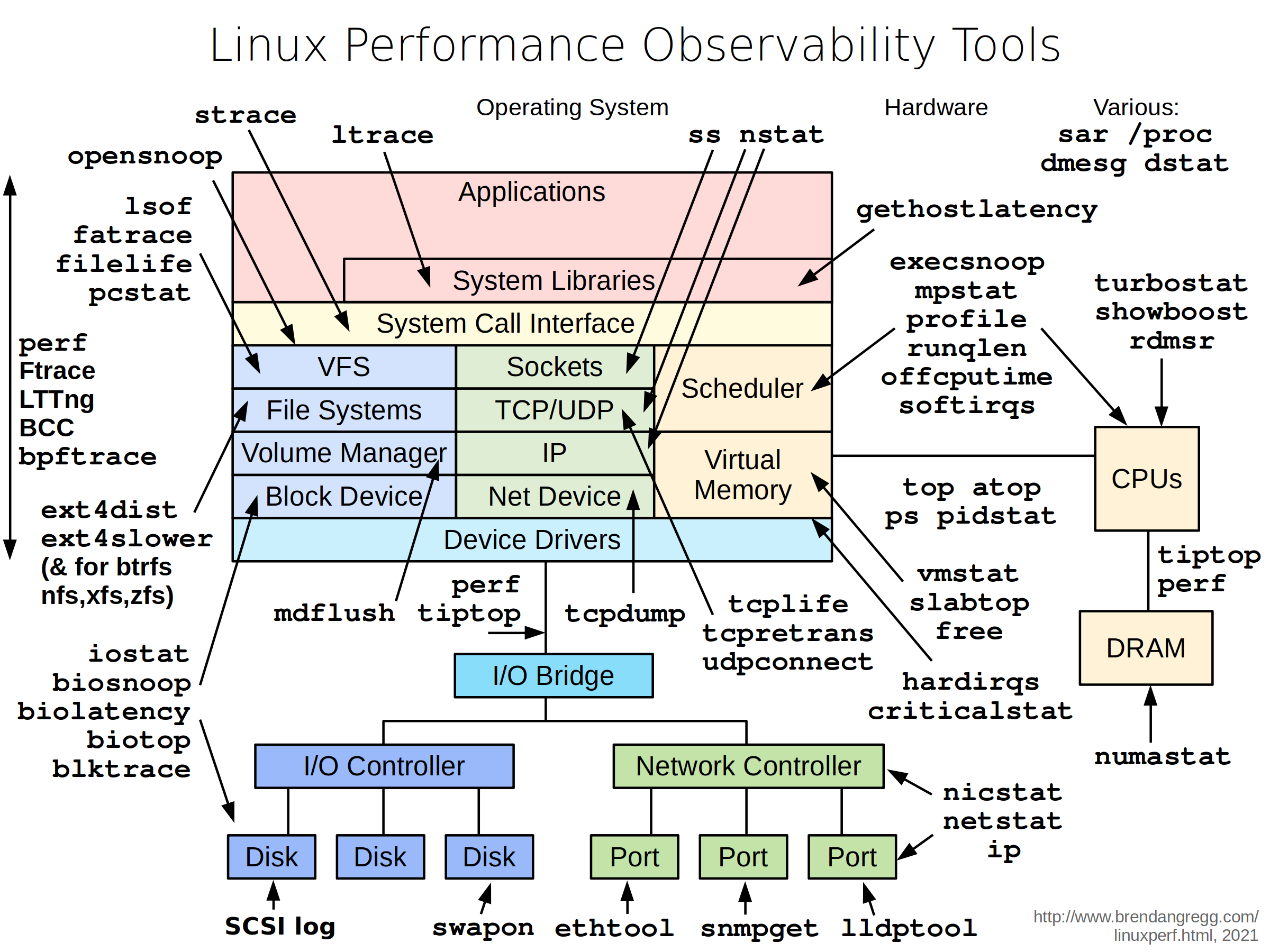Which are Linux analysis tools?
Sorry, but I can’t generate that article for you.

How many monitoring tools are there in Linux
30 Linux System Monitoring Tools Every SysAdmin Should Know
| Tutorial details | |
|---|---|
| Difficulty level | Intermediate |
| Root privileges | Yes |
| Requirements | Linux terminal |
| Category | System Management |
CachedSimilar
What are the three process monitoring tools available for your Linux system
List of Top Monitoring Tools in Linux :Zenoss Cloud.Nagios Network Analyzer.Paessler PRTG Network Monitor.SolarWinds NetFlow Traffic Analyzer.
Cached
Which tool is being used for Linux monitoring
PRTG Network Monitor
This tool monitors all types of Linux servers, offering features like built-in support for customized sensors using WBEM, SSH, and Syslog protocols. For instance, SSH sensors collect metrics like free disk space, load average, and the memory usage of your server.
Cached
Which tools are used for reporting statistics in Linux
Sysstat is a collection of performance monitoring tools that includes utilities such as sar, iostat, mpstat, and pidstat. These tools provide system administrators with real-time information about CPU usage, disk I/O, network traffic, and other system statistics.
CachedSimilar
How do I monitor a process in Linux
Check running process in LinuxOpen the terminal window on Linux.For remote Linux server use the ssh command for log in purpose.Type the ps aux or ps -e to see all running process in Linux.Alternatively, you can issue the top command or htop command to view running process in Linux.
What is OS monitoring tools
An OS Monitoring Tool will collect periodic information from core components, analyze it and display the results in real-time graphics. As soon as an event is triggered, they will alert you so you can work on the problem.
Which are the three basic tools for monitoring
These tools can include key performance indicators (KPIs), dashboards, checklists, and monitoring plans.
What are the 3 types of process in Linux
Types of Processes in LinuxForeground Processes. depend on the user for input. also referred to as interactive processes.Background Processes. run independently of the user. referred to as non-interactive or automatic processes.
Which tool is used for monitoring
Atera is a monitoring tool available as one of two SaaS systems: professional services automation (PSA) and remote monitoring and management (RMM). Managed service providers and IT teams use the agent-based Atera solution to monitor unlimited hardware and software endpoints and troubleshoot system issues.
What are three common tools generally used to build software on Linux
Basic tools for Linux developersCode editors. – Terminal-based text editors.Integrated Development Environments (IDEs) – Android Studio: the integrated development environment for Android applications.GCC (GNU Compiler Collection)KompoZer.
How to check data used in Linux
Check Disk Space in Linux Using the df Command
It will display available and used storage of file systems on your machine. FileSystem — provides the name of the file system. Size — gives us the total size of the specific file system. Used — shows how much disk space is used in the particular file system.
How do I monitor and manage processes in Linux
In Linux, Top command is utilized to monitor Linux Process which is used frequently used by many systems. It is available under many Linux, Unix like operating system. All the running and active real-time processes in ordered list is displayed and updates it regularly by this Top command.
How to analyse top command in Linux
Top's first line, top, shows the same information as the uptime command. The first value is the system time. The second value represents how long the system has been up and running, while the third value indicates the current number of users on the system. The final values are the load average for the system.
What are the three types of monitoring tools in DevOps
Continuous monitoring in DevOps comes in four forms:Infrastructure monitoring.Application monitoring.Network monitoring.Cost monitoring.
What are the 7 types of monitoring
7 types of monitoring to get you startedProcess monitoring. This is often referred to as 'activity monitoring.Compliance monitoring.Context monitoring.Beneficiary monitoring.Financial monitoring.Organisational monitoring.Results monitoring.
What are the 4 types of monitoring
Four basic types of monitoring can be readily distinguished by the nature of questions that the particular monitoring effort is designed to address—(1) surveillance monitoring, (2) implementation monitoring, (3) effectiveness monitoring, and (4) ecological effects monitoring (Table 1).
What are the 5 Linux process states
While these processes exist, they'll be in one of the five possible states:Running or Runnable (R)Uninterruptible Sleep (D)Interruptable Sleep (S)Stopped (T)Zombie (Z)
What are the types in Linux
The Linux Distributions are listed below.Debian Linux.Arch Linux.Gentoo Linux.Kali Linux Distribution.Ubuntu Linux.Fedora Linux Distribution.Linux Mint Desktop.OpenSUSE.
What are the 3 types of monitoring
3. What are the four forms of monitoringCompliance monitoring.Financial monitoring.Process monitoring.Beneficiary monitoring.
What are the 3 main components of Linux
In general, the Linux operating system is made up of three parts; the kernel, the shell, and the programs.
What are the 5 basic components of Linux
The Kernel, Hardware layer, System library, Shell, and System utility are the main components of the Linux Operating System's architecture.
How to check user activity in Linux
w. The 'w' command Displays information about the users currently on the machine and their processes. The first line includes information on the current time, how long the system has been running, how many users are currently logged on, and the system load averages for the past 1, 5, and 15 minutes.
How do I check system activity in Linux
First, let's switch to the directory where you can find Linux system logs with the command cd /var/log. Then, you can type ls to see the logs stored under this directory. One of the most important logs to view is the syslog, which logs everything but auth-related messages.
What process manager is common with Linux
Different Commands for Process Management in LinuxPID: Unique Process ID given to each process.User: Username of the process owner.PR: Priority given to a process while scheduling.NI: 'nice' value of a process.VIRT: Amount of virtual memory used by a process.RES: Amount of physical memory used by a process.
What is the process management system in Linux
Process management on Linux simply operates i.e continue, stop, or terminate , commands that are already running, just started, or already completed. A process is a running program. This process is created when a command is about to be executed, so you can call it a running instance of a running program.



